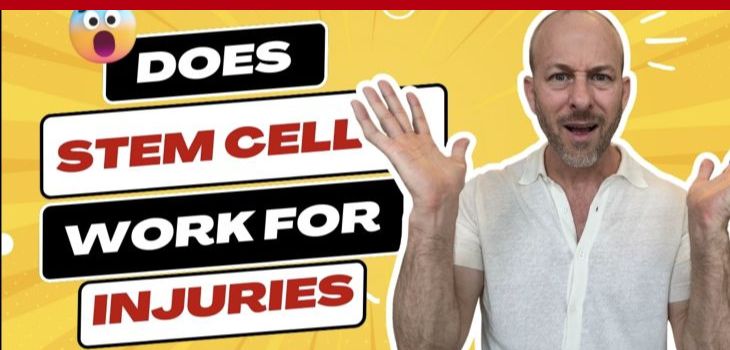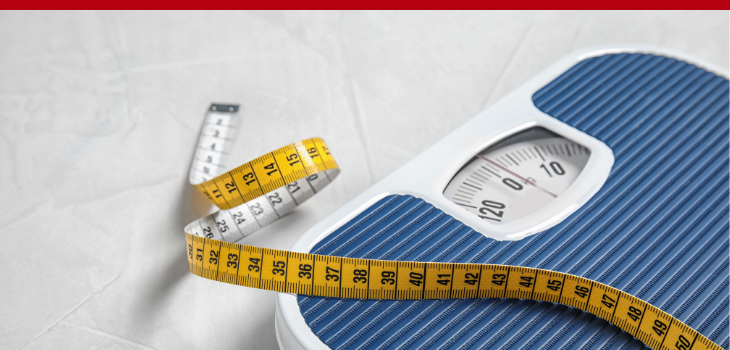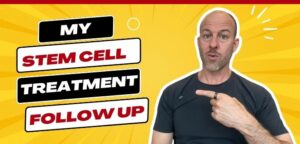Do you have some joint pains or arthritis that gets in the way of your active lifestyle?
Do you want to know about treatment alternatives to drugs and orthopedic surgery?
Then you’re in the right place.
You see, I’ve been dealing with injuries (and the osteoarthritis that comes after) for over two decades.
When I first started experiencing joint pans, I got desperate for answers. But the doctors I went to didn’t help. They basically told me to tough it out because I wasn’t a candidate for surgery.
No mention of things that I could do to heal my body naturally to avoid the operating table.The vibe was to come back when I was old enough (or in pain enough) to sign up for surgery.
That’s when I began my search for the best methods in the world.
For the past 2 decades, I have tried acupuncture, Chinese medicine, supplements for pain, ozone therapy, physiotherapy, rehab exercises from the top experts in the world, float tanks, weekly exercise routines, anti-inflammatory diet, energy healing, ayahuasca ceremonies, meditation, everything you can think of.
They gave me some relief, but not for the long term, and I was stuck in this cycle of being in pain and having my pain manageable and then again being in pain.
The truth is I’m in a place in my life where I’ve been living my best life, but the pain is stopping me from enjoying life more and even going back to my hobbies.
I’m on a mission to live my best decades pain-free, and that’s why, after trying everything that is available and not finding more permanent solutions, I decided to spend hundreds of hours looking for the best treatment, and that’s how you find out that stem cell treatments.
I just got the stem cell treatment, and I’ll be reporting back on my results in the next few weeks. But, in the meantime, I want to tell you more about stem cells and what I learned from researching them.
In this article, we’ll discuss what stem cells are, the science behind them, and what my procedure was like.
Let’s dive in!

What Are Stem Cells?
Imagine your body as a performance super car. Let’s say a Ferrari. Stem cells would be the maintenance crew at the dealership that are capable of repairing or replacing any part that isn’t working properly.
At least, that’s the idea.
What we know is that stem cells are the body’s master cells. Unlike other cells, they have the unique ability to turn into into many different cell types, from muscle cells to brain cells. In the context of joint health, the most relevant are mesenchymal stem cells (MSCs).
Right now treatments use MSCs from three different places:
- Fat tissue: are harvested using surgery or liposuction from your fat.
- Bone marrow: are harvested from one of your bones.
- Umbilical cords: are harvested from donated umbilical cords.
I should mention when stem cells initially became a topic of public discussion in the US, they talking stem cells taken from aborted fetuses. It’s important to note that no clinic is using these (although there’s some discussion in research saying it’s still important to use them for research for other diseases).
So if you’re not up to date, now you know. We’re not discussing these cells at all.
Stem cells are a still a controversial treatment but not for the reasons you may have initially heard about.

The Science Behind Stem Cells for Joint Health
Joint pain and conditions like osteoarthritis are a serious health crisis.
In the United States, 21.2 % of all adults have arthritis. It’s the leading cause of work disability. If you’re active, it’s the issue that will stop you from doing the most important thing you can for your health: exercise.
While losing weight, reducing visceral fat, physical therapy, improving sleep quality, lowering inflammation, and some supplements can help. They don’t fix the problem. The issue is the cartilage (or other joint structures) are still damaged and can cause pain.
That’s why stem cell therapy it so exciting. It represents a groundbreaking alternative. It offers regenerative potential that traditional treatments cannot.
Recent human studies have shed light on this potential. Stem cells, particularly mesenchymal stem cells (MSCs), have been shown to possess anti-inflammatory properties, reduce pain, and promote tissue repair. When injected into a damaged joint, they can encourage the body to mend its own tissues, effectively turning back the clock on wear and tear.
Sounds great, right?
Well, yes. But there are issues.
The latest research on human trials has shown promising outcomes. Patients have reported significant reductions in pain and improvement in function following stem cell treatments for conditions like knee osteoarthritis. However, it’s crucial to note that results can vary, and stem cell therapy is not a one-size-fits-all solution. The effectiveness can depend on the severity of the condition, the patient’s overall health, and other factors. For example, I was told at Dream Body Clinic that my low back and left shoulder were in bad shape. And that stem cells are powerful. But they’re not magic. They wanted to manage my expectations in case my results didn’t turn out to be as transformational as other patients’ experiences.
From what I’ve read, it seems the types of stem cells used, their dosage, and how they’re injected matter. For example, in Dream Body Clinic, where I got my injections, they use a high number of stem cells harvested from umbilical cords. It’s important to note that the umbilical cord tissue is taken from a health birth. And it would be thrown away afterward. But it turns out that umbilical cords are a great source of stem cells. So it’s ethical and no one is harmed in the process.
Many treatments in the US use stem cells from harvested from you. But in my case, my 47 year old stem cells are believed to not be as effective as stem cells derived from an umbilical cord. So I went for it. I watched so many testimonials of athletes who had stem cell treatments and went back to training hard again. There’s too many for me to believe that it’s placebo like some people are suggesting.
When injected into an injured or degenerated joint, MSCs embark on a fascinating journey. They don’t just differentiate; they also secrete bioactive factors that mitigate inflammation and recruit local cells to contribute to tissue repair. This dual action, regenerating and repairing, is what sets stem cell therapy apart from traditional treatments that typically address symptoms rather than underlying causes.
The Procedure: What to Expect
The process at Dream Body Clinic began with getting MRIs for all the joints being treated. In my case, this was 8 MRIs. After the imaging was ready, I had a thorough consultation with Dr. Arick, where we went over each MRI to assess the status of each joint and expected outcomes of the treatments. For my treatment, the cells were harvested from umbilical cords, a method known for yielding high concentrations of potent, youthful MSCs.
These cells were then meticulously processed and prepared for injection. During the treatment, the stem cells were injected directly into the affected joints guided by ultrasound imaging. This is done to ensure that the stem cells are delivered precisely to the affected area. I also received an IV of stem cells in addition to the injections.
Was it painful?
The doctor uses lidocaine for some areas that are known to be more sensitive. But you are getting injections directly into the joint. However, I had several treatments in different parts of my body:
- Neck
- Both shoulders
- Both wrists • Fingers on both hands • Low back
- Both hips • Both knees
- Both big toes
- Left ankle
- Right foot
It was a “Needle Party,” as Dream Body Clinic’s CEO said. But I ended up walking out of the clinic.
The first couple of days I took Tylenol for the pain. And I tried to keep from moving much. I was also advised to avoid exercise – even physical therapy exercises – for the first two weeks after treatment.
So I’m 10 days into my recovery now. It’s too early to say if they’re working. The doctor told me to expect to notice results 3-6 months after the treatment. But so far, so good.
The actual injection process was surprisingly fast and straightforward. and the Team at Dream Body Clinic did a great job making me feel comfortable during the treatment. Not to mention the calm and friendly atmosphere in Puerto Vallarta.
Setting Realistic Expectations
While the potential of stem cell therapy is exciting, it’s important to approach treatment with realistic expectations. It’s not a magic bullet but rather a component of a comprehensive approach to joint health. Stem cells are not a substitute for taking care of yourself. And being unhealthy may affect your results.
Nutrition, physical activity, and overall lifestyle play crucial roles in the treatment’s success.
So it’s crucial to approach stem cell therapy with a balanced perspective. The field is still evolving. Research is ongoing. Success varies from person to person. And it’s influenced by factors such as the severity of the condition, lifestyle, and overall health. Knowing all this is essential for informed decision-making when deciding if stem cells are something you want to try.

Choosing the Right Clinic
I met someone in an entrepreneur group I’m a member of who had stem cell treatment. And he had nothing but great things to say about the Dream Body Clinic.
After watching their testimonials, talking to their team, and having Josh, their CEO, on my podcast, I was sold.
Why? Because they provided a clear, informative, and supportive environment, which was crucial in my decision-making process.
Their Lab is licensed by the Mexican health board COFEPRIS (Mexico’s FDA) to produce stem cells, store stem cells as a cryo-bank, and licensed to practice regenerative medicine. Another thing I liked about them was that there weren’t any exaggerated claims. Josh, the CEO, believes in what he does and has had stem cell treatments done at his clinic. That says a lot about his faith in stem cells and his team.
Final Thoughts
Stem cell therapy is on the frontier of regenerative medicine. It offers hope and a new avenue for healing. As someone who has done my research and personally undergone the treatment, I can attest to its potential. But I also stress the importance of informed decision-making based on the latest evidence and professional advice.
While you and I will both have to wait at least 30 days to see if stem cells are effective for my joint pains and arthritis, I feel like this is only the beginning of my journey into regenerative medicine. Stay tuned for updates on my progress as well as my thoughts.
As we continue to explore the fascinating field of regenerative medicine, it’s an era of new beginnings—not just for those of us seeking relief from joint pains and injuries but for the entire scope of modern medicine.
Related Episodes:
535: Everything You Need to Know About Regenerative Medicine & Stem Cell Therapy with Joshua Ketner
577: Can Visceral Fat Affect Your Joint Pain? (And What To Do About It)










